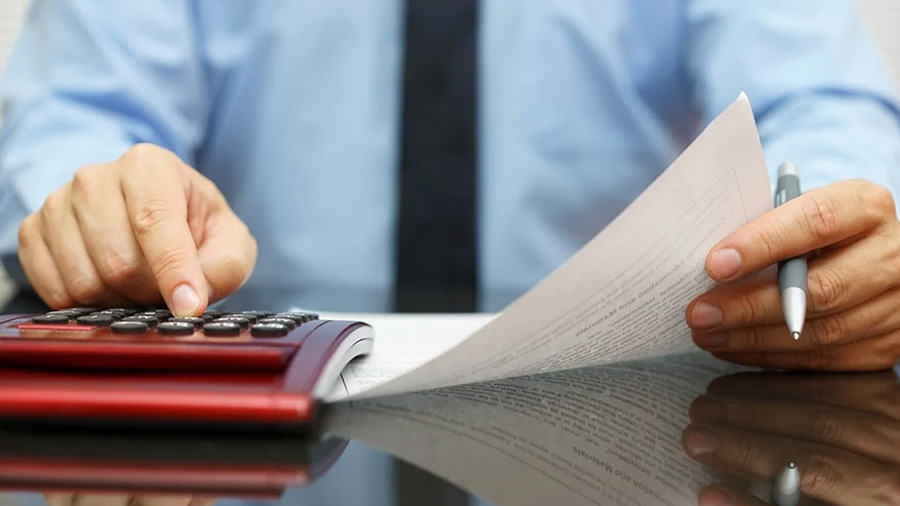Overview of VAT in Vietnam
Value Added Tax (VAT) is a broadly based consumption tax assessed on the value of goods and services arising through the process of production, circulation, and consumption. It is applicable to the majority of goods and services bought and sold for use in Vietnam.
All organizations and individuals conducting business and deriving incomes in Vietnam related to goods or services subject to VAT have to pay VAT regardless of whether they have Vietnam-based resident establishments or not. Exported goods and services to customers abroad can apply 0 percent VAT rate if some required conditions are met.
VAT is an indirect tax on domestic consumption applied nationwide rather than at different levels, such as state, provincial, or local taxes. It is a multi-stage tax that is collected at every stage of the production and distribution chain and passed on to the final customer.
For goods and services purchased from abroad, VAT applies to the duty-paid value of imported goods and services. The importer must pay VAT at the same time that they pay import duties to customs. For some categories of goods and services, which are subject to special consumption tax, VAT applies to the selling price plus the special consumption tax and environment tax.
July 2025 effective new VAT law
Vietnam's revised Value Added Tax (VAT) Law, scheduled to come into force on July 1, 2025, brings major updates to the country's VAT framework.
VAT tax reduction extended to December 2026
The Vietnamese government has extended the temporary 2 percent VAT reduction (from 10% to 8%) for certain goods and services until December 31, 2026.
Two calculation methods for VAT
The VAT law provides two different methods of calculating the tax amount: credit method (also called “the deduction method”) and direct method, which accordingly determine who has to do the tax declaration and who is eligible for a tax refund. A taxpayer can choose the appropriate calculation method based on the criteria described below.
VAT rates
VAT in Vietnam is applied at three main rates:
- 0 percent – For eligible exports of goods/services. Under new VAT law, additional requirements are introduced, business should pay more attention to ensure the compliance.
- 5 percent – For essential goods and services.
- 10 percent – Standard rate for most goods and services. Until December 31, 2026, it is 8 percent, except for some goods and services.
Credit method
Most businesses are required to use the credit method, which applies to business organizations established under the Law on Enterprises, foreign-invested enterprises (FIEs), and foreign parties to business cooperation contracts (BCC). Such business establishments must fully adopt Vietnamese regulations on accounting, invoices, and documents as prescribed by the relevant laws, including:
- Business establishments with annual revenue subject to VAT of VND1 billion or more; and,
- Certain cases voluntarily register for VAT declaration under the deduction method.
Payable VAT Amount = Output VAT Amount – Creditable Input VAT Amount
The output VAT amount is the total amount of VAT on sold goods and services indicated in the VAT invoices. The creditable VAT input amount is the total VAT amount on goods or services purchased as indicated in VAT invoices and on imported goods, payment to overseas suppliers as indicated in bank payment of imported VAT and FCT-VAT in relation to purchases of goods and services from foreign suppliers as indicated in FCT return and VAT payment voucher.
In order to claim the input VAT, the taxpayers must obtain the proper VAT invoices from suppliers. In addition, the following conditions must be met:
- Relevant to business activities;
- The VAT invoices for the purchase of goods and services are legal;
- Receipts of non-cash payments for the purchase of goods and services, except for purchases below VND 20 million (US$857). Under the draft Decree providing guidance on the new VAT law, this threshold is adjusted to VND 5 million (US$196) and
- Purchase contract is suggested for transactions with high value; and
- Customs declarations of imported goods and other related documents for imported goods.
Under the credit method, payment and declaration of VAT is made on a monthly or quarterly basis, where the taxpayer adds and subtracts the input and output VAT and pays or claims the balance to the tax authority. As the situation is normalized every month or quarter, no annual VAT finalization is required at the end of the year.
Direct method
The direct method applies to:
-
Business establishments with annual revenue subject to VAT of less than VND 1 billion.
-
Individuals and business households. From January 1, 2026, individuals and business households with annual revenue exceeding VND 1 billion will be required to apply the deduction method.
-
Business establishments that do not maintain proper books of account, and foreign organizations or individuals conducting business activities in forms not regulated under the Law on Investment.
-
Business establishments engaged in trading gold, silver, and precious stones.
Payable VAT amount = Revenue or Added Value* x Deemed VAT rate
For gold, silver:
Payable VAT amount = Added value of sold goods or services* x VAT rate
*Added value of sold goods or services = Selling price – Purchasing price of goods or services
Taxpayer risk classification and refund treatment
A key addition under the 2025 VAT law is the implementation of a taxpayer classification system, which evaluates businesses based on compliance history and risk profile:
- Compliant taxpayers—those with strong compliance records, proper documentation, and use of bank transfers—may be eligible for pre-refund approval, meaning VAT refunds can be processed before tax audits. In these cases, refunds may be issued within 6 working days from submission of a complete dossier.
- High-risk taxpayers must undergo a mandatory tax audit before any refund is processed. These taxpayers may face extended timelines and heightened scrutiny.
In practice, tax authorities often prefer to offset refundable VAT against future tax liabilities rather than issuing direct cash refunds. Businesses flagged as high-risk should anticipate that audits may delay the refund process, even if proper documents are provided.
Tax filing and payment
Under Vietnam’s tax management regulations, businesses are required to file VAT returns and make tax payments either monthly or quarterly, based on their turnover:
- Monthly filers must submit VAT returns and complete payments by the 20th day of the following month.
- Quarterly filers must submit returns and payments no later than the last day of the 1st month following the quarter-end.
- These requirements apply to both goods and service providers and are enforced nationwide.
For businesses with dependent accounting production establishments located in provinces or cities different from their headquarters:
- VAT must be declared and paid locally, based on the production turnover.
- If the production facility conducts cost accounting, it must register to use the credit method in that locality and issue value-added invoices when transferring semi-finished or finished products, including transfers to the head office.
- If the production facility does not conduct cost accounting, the headquarters must pay 2 percent VAT for goods subject to a 10 percent VAT rate, or 1 percent VAT for goods at the 5 percent rate, excluding turnover generated in the locality.
- In cases where no tax is payable at the head office, the enterprise is not required to pay VAT in the locality where the production facility is located.
- VAT already paid in the locality can be deducted from the VAT payable at the head office.
Tax refund
From July 1, 2025, business establishments that pay VAT according to the credit method are entitled to a tax refund in the following situations:
- Only dissolution cases (not mergers or transfers) are eligible for VAT refunds of overpaid or uncredited VAT input.
- Exporters can claim monthly/quarterly refunds if the accumulated creditable input VAT ≥ VND 300 million (approximately US$12,060). The amount of input VAT relating to export sales to be refunded must not exceed 10% of export revenue.
- Business has a new investment project or expansion project and the total creditable input VAT amount is 300 million VND (approximately USD 12,060) or more.
- Businesses that only produce goods and provide services subject to a 5 percent VAT rate can claim a refund if the amount of VAT input not fully deducted reaches VND 300 million or more after 12 consecutive months or four consecutive quarters.
- Businesses involved in Official Development Assistance (ODA) projects or those receiving non-refundable aid for humanitarian projects are eligible for VAT refunds on goods and services purchased within Vietnam for these projects.
Documents required for VAT refund dossier
The Company is eligible to claim a refund of all input VAT incurred during the investment period, prior to generating official revenue. There is no cap on the refundable amount, provided that sufficient supporting documentation is available.
As regulated, the following documents are required to have in VAT refund dossier for the investment project.
- Certified copy of the IRC, Investment Certificate, or Investment License.
- For projects involving construction: Certified copy of the Land Use Rights Certificate, land allocation decision, or land lease contract from the competent authority; construction permit.
- Certified copy of documents evidencing capital contribution.
- List of invoices and documents for purchased goods and services.
Documents required to be eligible for 0 percent VAT rate, as follows:
- Export contract having both parties’ bank account information.
- The VAT invoices.
- Receipts of non-cash payments for the purchase of goods and services, except for purchases below VND 20 million (US$857). Under draft Decree providing guidance on the new VAT law, this threshold is adjusted to VND 5 million (US$196).
- Customs declarations of exported goods.
- Documents to prove that the exported services are consumed outside of Vietnam.
In addition, under the new VAT law, additional documentation requirements for refund claims, particularly involving exported goods, including:
- Packing lists.
- Bills of lading.
- Cargo insurance certificates.
- Contracts.
- Customs declarations.
- Payment proof.
To obtain a VAT refund, enterprises must submit a complete application dossier to the relevant tax authority.
The timeline for processing VAT refunds can vary, typically ranging from 6 to 40 days. This period often involves a thorough review and audit by tax authorities to ensure compliance and accuracy of the submitted documents.
Common mistakes to avoid
- Ensure the registered investment period matches the actual project completion timeline. Input VAT falling outside the investment timeframe cannot be refunded.
- Verify that your investment projects meet the requirements for conditional business lines and obtain necessary sub-licenses.
- Ensure full contribution of registered charter capital with valid proof.
- Maintain detailed and accurate records for both business operations and investment projects to avoid non-compliance issues.
- Contracts with customers overseas have to include the Company’s bank account information.








